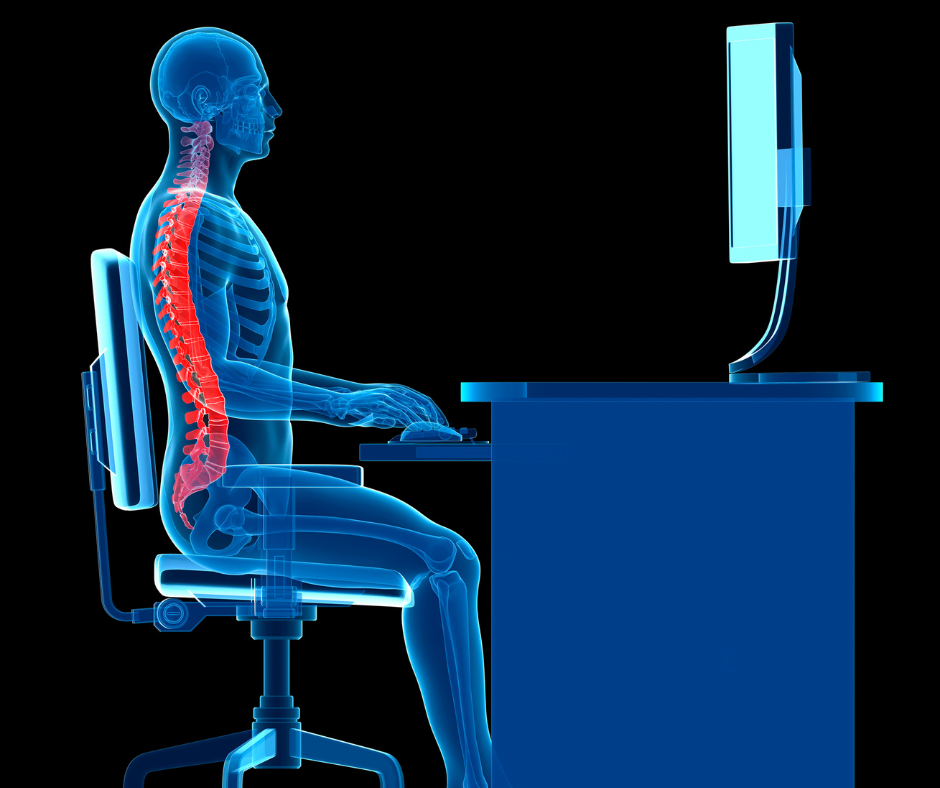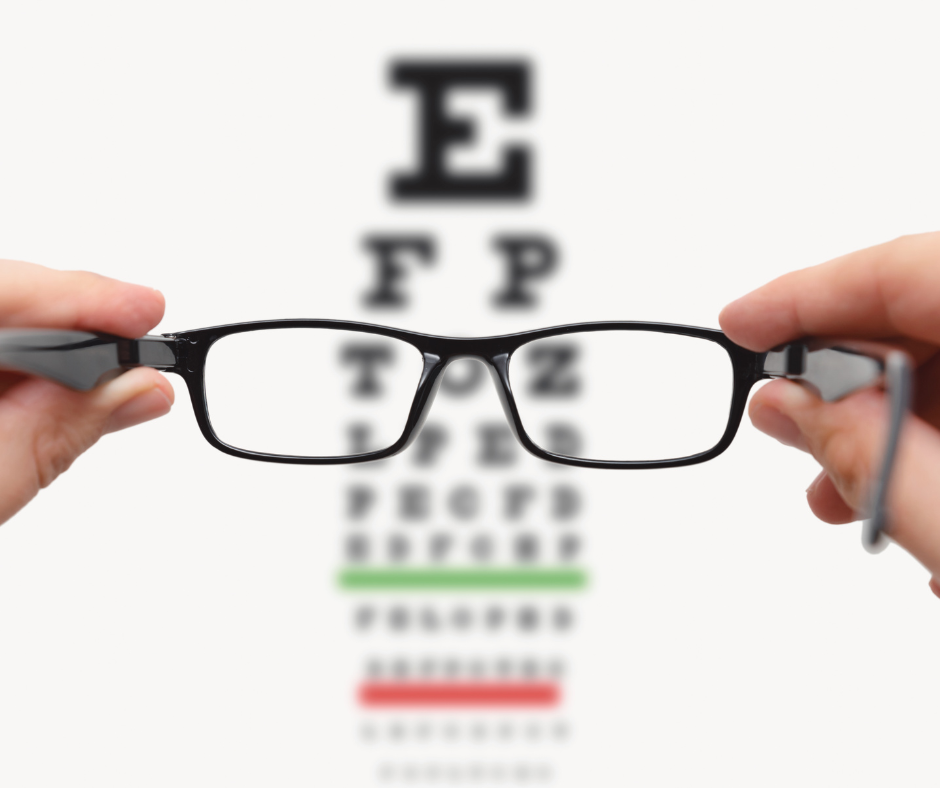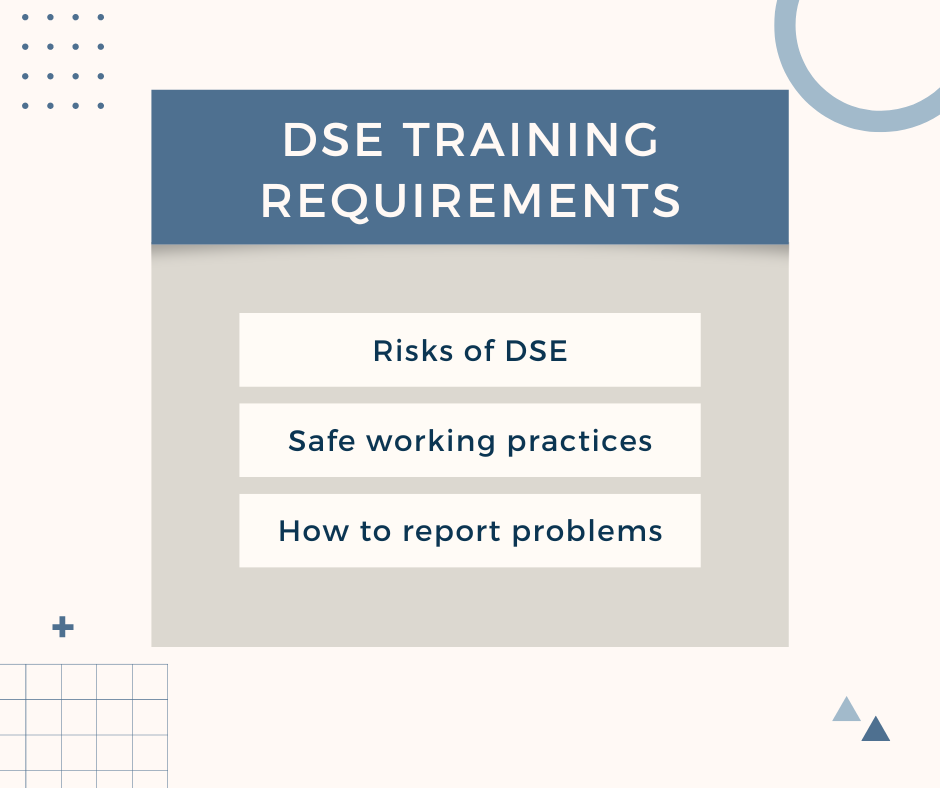Display Screen Equipment (DSE) is defined as equipment or devices that have an alphanumeric or graphic display screen, including display screens, laptops, touch screens and other similar devices.
Employers have a responsibility to protect their workers from the health risks of working with DSE, which can include neck, shoulder, back, arm, wrist and hand pain, along with fatigue and eye strain if used incorrectly.
Keep reading to learn more about the requirements of the Display Screen Equipment Regulations.
Is a DSE assessment a legal requirement?
 A DSE user is someone who uses display screen equipment as a part of their work.
A DSE user is someone who uses display screen equipment as a part of their work.
This could be a mobile worker, home worker or workers who hot desk. By law, all of these workers will need to complete a DSE assessment that covers their equipment, furniture and work conditions.
These areas need to be assessed as they can affect the comfort and health of the user. For instance, a chair at the wrong height could lead a user to unconsciously strain throughout their work day and start to experience aches and pains over time. The environment also has a great effect e.g. if a DSE screen is by a window that gets bright sunlight in the afternoon, the user will have to strain to see their screen.
Their employer will also need to take steps to ensure that breaks are taken throughout the working day. With some jobs, breaks from screens and DSE equipment can naturally be built into the day by going to meetings or making phone calls. There is no legal guidance as to the length and frequency of breaks, however, the HSE recommends taking short breaks often e.g. 5 – 10 minutes every hour.
Do DSE users get free eye tests?
 If a DSE user requests an eye test, then employers must provide one. This could be done by letting users arrange the test and reimbursing them for the cost later, providing pre-paid vouchers for opticians or sending all DSE users to the same optician and paying the optician directly.
If a DSE user requests an eye test, then employers must provide one. This could be done by letting users arrange the test and reimbursing them for the cost later, providing pre-paid vouchers for opticians or sending all DSE users to the same optician and paying the optician directly.
Glasses must only be provided by the employer if the eye test shows an employee needs special glasses prescribed for the distance the screen is viewed at. If an ordinary prescription is suitable, employers do not have to pay for glasses.
What must employees be trained on for DSE?
 Employers must provide H&S training and information for DSE users. The training should cover risks in DSE work and safe working practices. Risks of DSE work include Musculo-skeletal disorders, work-related upper limb disorders (WRULD) and eye strain which can lead to headaches or migraines.
Employers must provide H&S training and information for DSE users. The training should cover risks in DSE work and safe working practices. Risks of DSE work include Musculo-skeletal disorders, work-related upper limb disorders (WRULD) and eye strain which can lead to headaches or migraines.
Safe working practices can help to reduce or avoid these risks. Examples of these practices include having a good posture, adjusting chairs and other furniture, arranging desk space, adjusting screens and lighting to avoid reflections and glare, breaks and change of activity, risk assessments and how to report problems to an employer if necessary.
How can WA Management help?
As part of our online training shop, we offer a Display Screen Equipment online training course which can be accessed 24/7 online via desktop or tablet. This can be used in conjunction with our Display Screen Equipment assessment for DSE users – get in touch to sign up for this.
We can also offer bespoke risk assessments to cover the use of display screen equipment.

Display Screen Equipment and Lone Working. training courses are essential tools in protecting the health and safety of your employees. Make sure you don’t miss out on our 10% off deal on these courses, available until the end of September. Simply enter the code ‘dse10’ at checkout to save!
Read more Consultant’s blogs here.
To keep up to date with the latest health & safety news and advice, follow us on social media:
